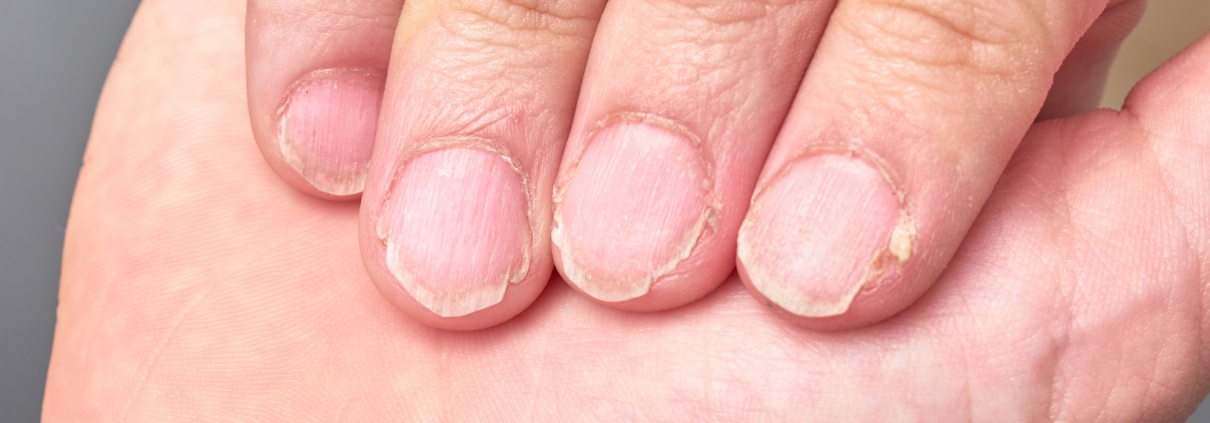Common Nail Problems and How to Prevent Them
Nails are an essential part of personal grooming, but they also serve as indicators of your overall health. From discoloration to brittleness, nail problems can stem from various causes, including lifestyle habits and underlying health conditions. This article explores some common nail problems and how you can prevent them.
1. Brittle Nails
Symptoms: Nails that split, peel, or break easily.
Causes: Frequent exposure to water, harsh chemicals, or overuse of nail products like polish removers. Nutritional deficiencies, such as a lack of biotin or iron, can also contribute.
Prevention:
Keep your nails moisturized with hand creams or cuticle oils.
Avoid prolonged water exposure by wearing gloves while doing chores.
Include biotin-rich foods (e.g., eggs, nuts) in your diet.
2. Fungal Infections
Symptoms: Thickened, discolored nails with a brittle or crumbly texture.
Causes: Fungi thrive in warm, moist environments, making athletes or those wearing tight shoes more susceptible.
Prevention:
Keep your feet dry and wear breathable footwear.
Change socks daily and avoid walking barefoot in public places like pools or gyms.
Disinfect nail tools regularly to prevent contamination.
3. Ingrown Nails
Symptoms: Nails that grow into the skin, causing pain, swelling, and redness.
Causes: Improper trimming, tight shoes, or injury to the toe.
Prevention:
Trim nails straight across and avoid rounding the edges.
Wear shoes with enough room for your toes to move freely.
Address any foot trauma promptly to prevent complications.
4. Nail Discoloration
Symptoms: Yellow, white, or brown discoloration of the nails.
Causes: Fungal infections, excessive use of nail polish, or smoking. Yellowing can also indicate underlying conditions like diabetes or thyroid issues.
Prevention:
Take breaks from nail polish to allow nails to breathe.
Quit smoking to improve nail health and appearance.
Treat any infections promptly and consult a doctor if discoloration persists.
5. Hangnails
Symptoms: Tiny pieces of torn skin near the edges of the nail.
Causes: Dry skin, nail biting, or using the hands for rough tasks without protection.
Prevention:
Keep your hands moisturized with a rich lotion or cuticle oil.
Avoid biting nails or picking at the skin.
Wear gloves when handling rough materials or during cold weather.
6. Nail Ridges
Symptoms: Vertical or horizontal ridges running across the nail.
Causes: Vertical ridges are often normal and age-related, but horizontal ridges (Beau’s lines) may indicate stress, trauma, or illness.
Prevention:
Ensure a balanced diet to avoid nutrient deficiencies.
Avoid excessive pressure on the nails, such as aggressive manicures.
Seek medical advice if ridges are accompanied by other symptoms.
7. Nail Biting (Onychophagia)
Symptoms: Damaged nails, uneven edges, and sometimes infections.
Causes: Stress, anxiety, or a bad habit.
Prevention:
Use bitter-tasting nail polish designed to deter biting.
Practice stress-management techniques like deep breathing or mindfulness.
Keep your nails neatly trimmed to reduce the urge to bite.
8. Clubbing
Symptoms: Nails that curve downward and appear larger or swollen at the tips.
Causes: Clubbing can be a sign of low oxygen levels in the blood, often linked to lung or heart conditions.
Prevention:
Since clubbing is usually a symptom of underlying health issues, regular health check-ups are crucial.
General Tips for Nail Health
Maintain hygiene: Wash hands and feet regularly, and dry them thoroughly.
Use proper tools: Only use clean, high-quality nail clippers and files.
Limit harsh products: Avoid overuse of nail polish removers and products containing acetone.
Stay hydrated: Drink plenty of water to keep nails from becoming brittle.
When to Seek Medical Advice
While many nail problems can be managed with proper care, persistent issues or sudden changes in nail appearance may require a doctor’s attention. Conditions like psoriasis, thyroid disorders, or nutritional deficiencies often manifest through nail abnormalities.





